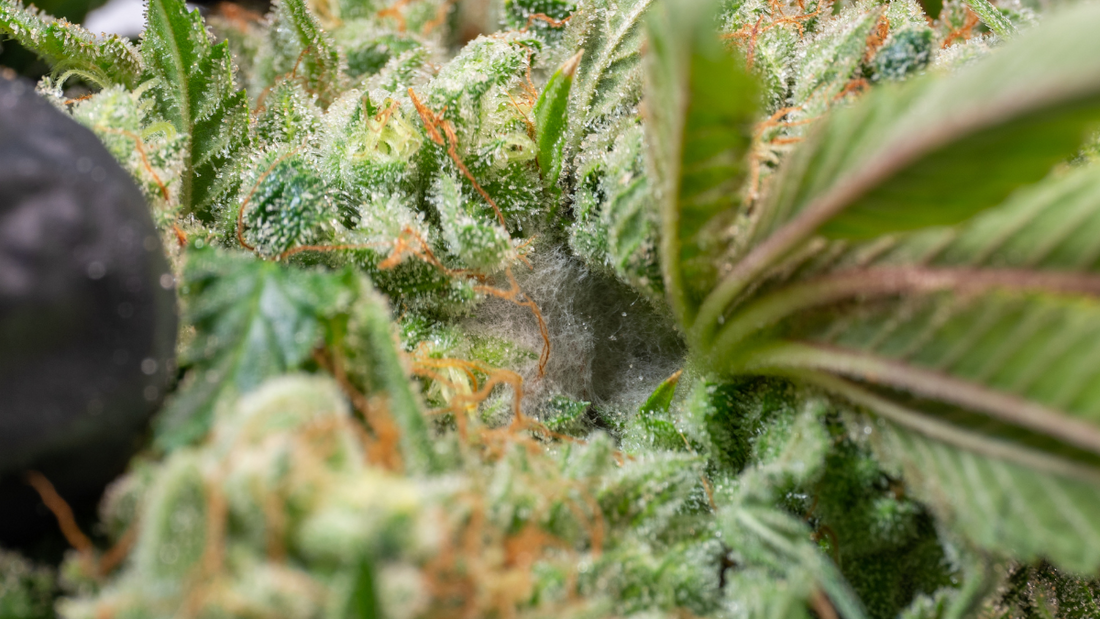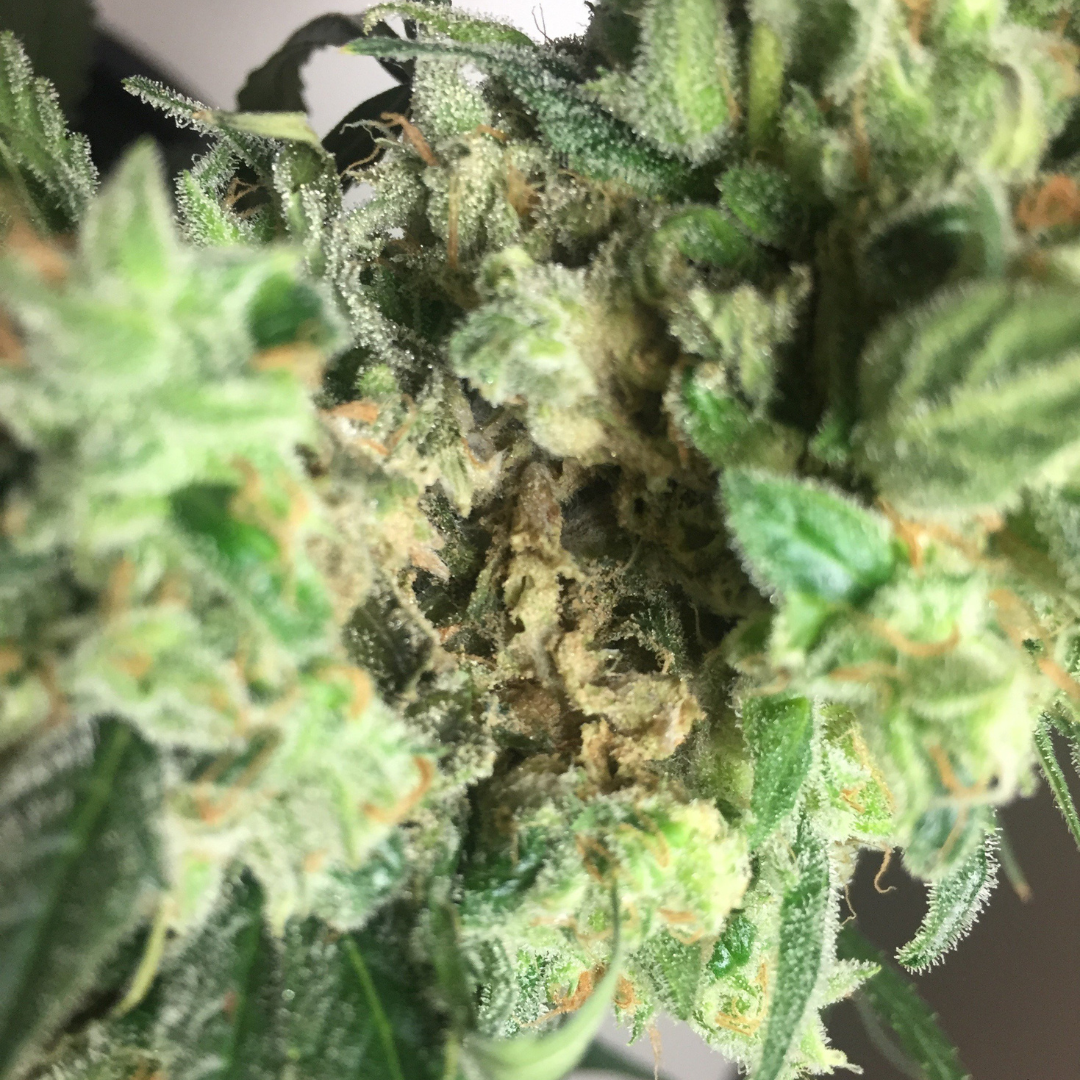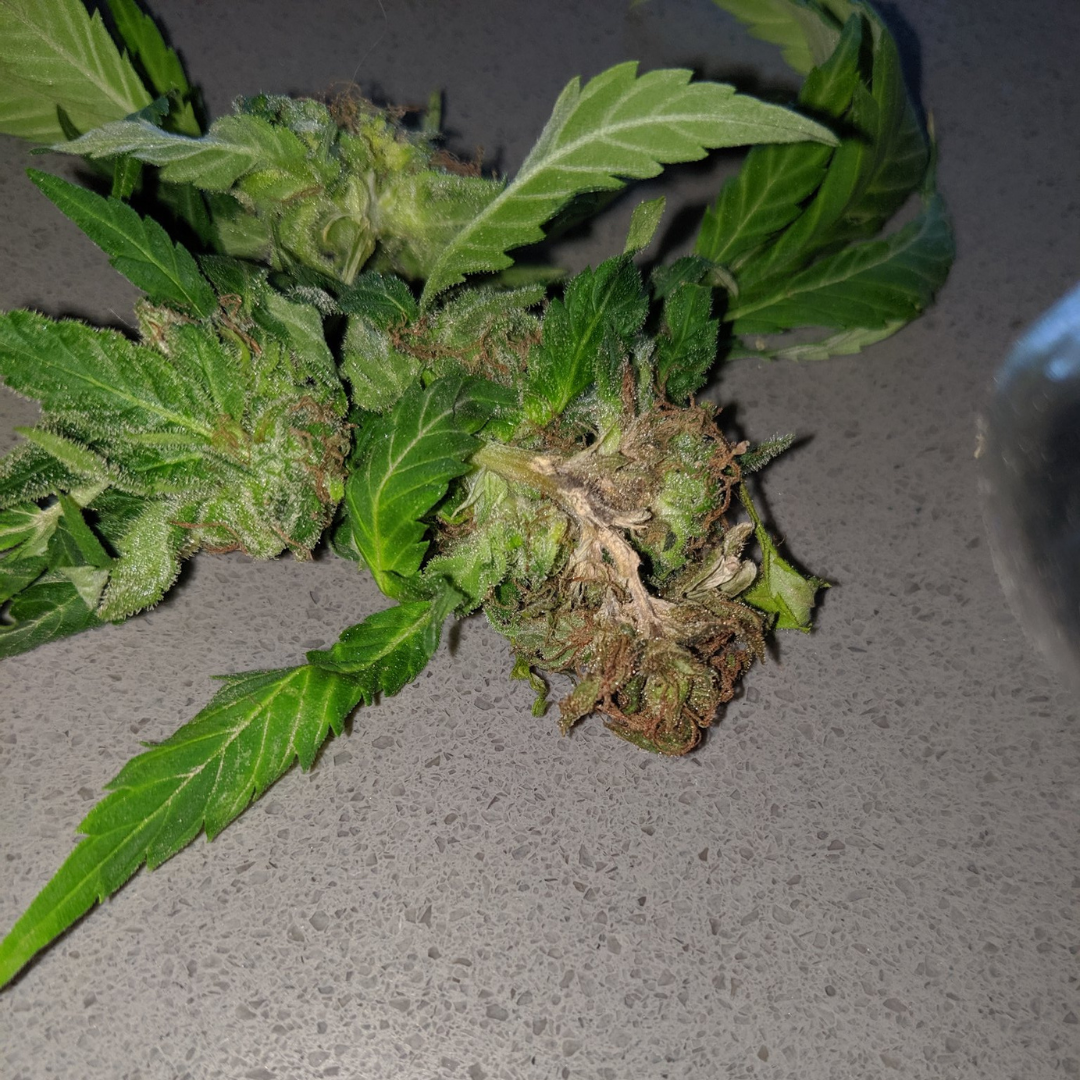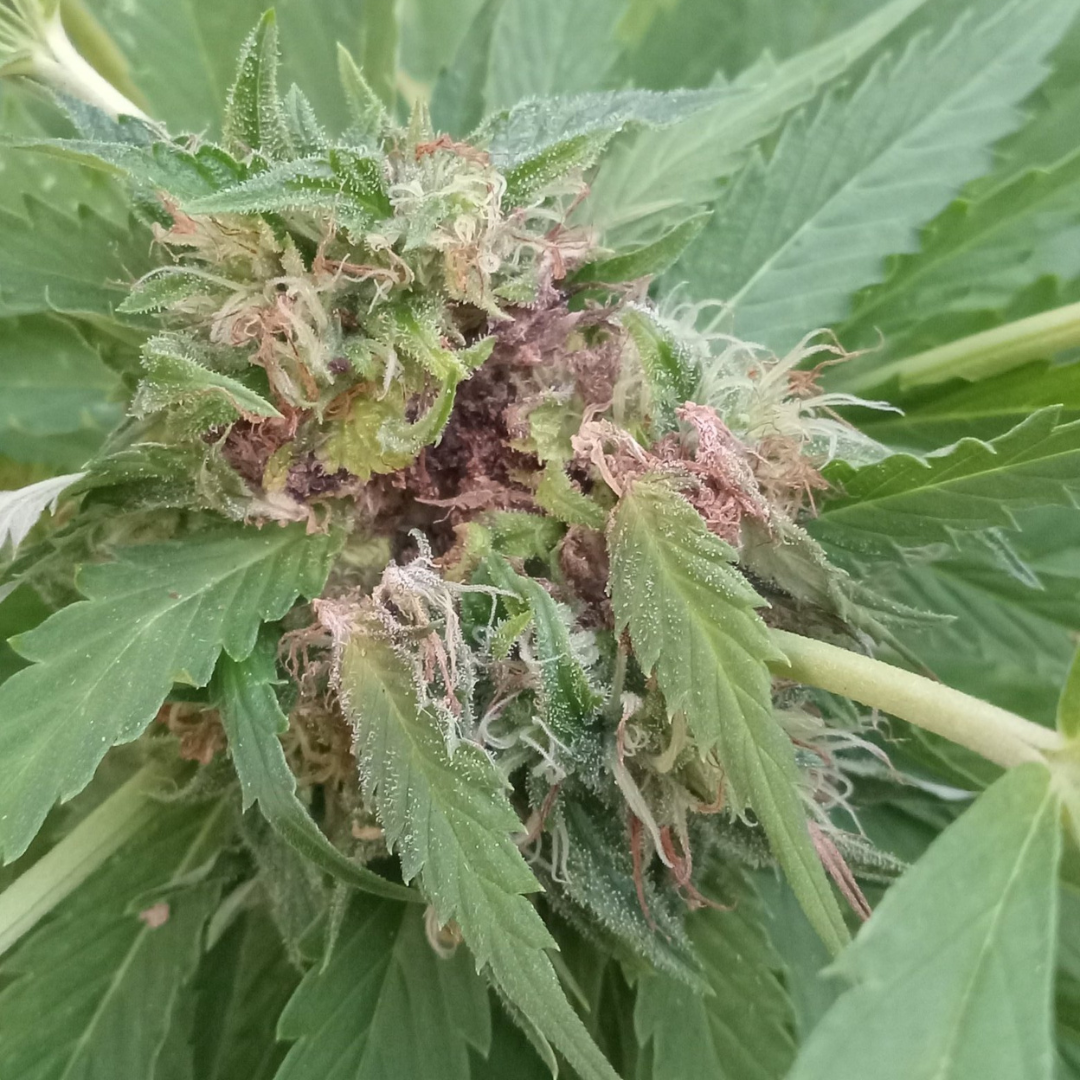Bud Rot in Cannabis Plants

Understanding Bud Rot
Bud Rot, or Botrytis cinerea, plays a significant role in agriculture, viticulture, and cannabis cultivation, marking its presence as both a challenge and, in unique cases, an advantage to growers. This article answers all your Bud Rot concerns, exploring its various identities, historical impact, and the innovative strategies developed to combat and manage it in diverse cultivation environments.
The Many Names of Bud Rot
Botrytis cinerea, a versatile and pervasive fungus, is recognized by a plethora of names, each reflecting its unique impact across different agricultural sectors. While "Bud Rot" is the moniker that strikes fear in the hearts of cannabis growers due to its devastating effect on cannabis buds, this fungal adversary is known by several other names across the plant cultivation and agricultural spectrum.
- Grey Mold: This name is derived from the characteristic grey, fuzzy appearance the fungus takes on as it colonizes plant tissues, common in both greenhouse and outdoor settings.
- Botrytis Blight: Often used in a more formal or scientific context, this term highlights the disease's capacity to cause widespread blight in a variety of crops.
- Big Bud Disease: Specifically in the cannabis industry, this colloquial term underscores the fungus's tendency to target the largest, most promising buds, leading to significant yield loss.
-
Noble Rot: In the winemaking world, Botrytis cinerea is sometimes deliberately encouraged under controlled conditions to dehydrate grapes, concentrating their sugars to produce sweet wines like Sauternes and Tokaji Aszú. In this context, the fungus is seen in a positive light.

- The Curse of the Successful Grower: A tongue-in-cheek reference among cannabis cultivators, acknowledging that the most lush and bountiful cannabis plants are often the most susceptible to Bud Rot.
- The Silent Destroyer: This nickname reflects the fungus's ability to infect and spread within crops quietly and efficiently, often going unnoticed until significant damage has been done.
- Ash Mold: In certain crops, particularly when Botrytis affects stored or overripe produce, it leaves behind a soft, ash-like texture, leading to this descriptive name.
Historical Context and Discovery
The first recorded instances of Botrytis cinerea date back to the 1800s, with its impact on wine grapes well documented. Its dual role was recognized early in viticulture: as a destroyer of crops in humid conditions and as a contributor to the cherished "noble rot" under the right circumstances, leading to the production of some of the world's finest sweet wines.
In the cannabis industry, the precise historical timeline of Bud Rot's recognition is less clear, largely due to the covert nature of cannabis growing throughout much of the 20th century. However, as cannabis has moved into legal cultivation in various parts of the world, the identification and management of Bud Rot have become critical areas of focus for growers seeking to protect their crops from this pervasive threat.
The Impact of Bud Rot on the Cannabis Industry
The first significant recognition of Bud Rot in the cannabis industry coincided with the indoor cultivation boom, as growers created controlled environments conducive to high-yield, high-quality cannabis production. These controlled environments, unfortunately, also provided ideal conditions for the proliferation of Botrytis cinerea, especially when humidity control was not adequately managed.
As the cannabis industry has evolved, so too understands Bud Rot's impact. The 1990s and early 2000s marked a period of rapid innovation in cultivation techniques, with a growing emphasis on disease prevention and control. This period saw the first major acknowledgments within the cannabis community of the need for strategic environmental controls, integrated pest management practices, and genetic selection to combat the threat of Bud Rot.
Innovations in Cultivation Against Bud Rot
The battle against Bud Rot has spurred numerous innovations in cannabis cultivation. Among these, the development of mold-resistant strains stands as a pivotal advancement. By selecting and breeding plants with natural resistance to Botrytis cinerea, breeders have been able to offer growers an additional tool in their arsenal against this disease.
Mold-resistant strains represent a convergence of traditional breeding techniques and modern genetic understanding. These strains are not impervious to Bud Rot but possess traits that make them less hospitable to the fungus, such as a more open bud structure to improve air circulation or a faster maturation process to reduce the window of vulnerability.
Identification of Bud Rot
Identifying Bud Rot early is paramount for effectively managing and mitigating its impact on cannabis crops. Insights from a comprehensive study on Botrytis cinerea, combined with general knowledge, offer valuable guidance for early detection:
-
Initial Appearance: Bud Rot first manifests as a subtle grey or brown fuzz on the buds, which might not be immediately noticeable.
-
Progression: As the infection advances, this fuzz becomes denser, covering more of the bud with a distinctive grey mold, signaling a severe infection.
-
Texture and Consistency: Infected buds may feel unusually soft or damp to the touch. Parts of the bud may crumble or detach easily, indicating internal decay and rot.
-
Smell: A musty, damp odor often accompanies infected buds, which is distinct from the plant's natural aroma and indicative of mold presence.
- Leaf Changes: Yellowing or dying leaves, particularly those directly attached to the buds, can be an early warning sign. These leaves might appear wilted or detach with minimal effort, suggesting underlying issues.
Are These Trichomes or Grey Mold?
Distinguishing between trichomes and grey mold (Botrytis cinerea) is crucial for cannabis cultivators, as each significantly impacts the plant in vastly different ways. Here's how to tell them apart:
Trichomes
- Appearance: Trichomes are the tiny, crystal-like structures covering the cannabis flower and leaves. They are usually clear, milky, or amber in color, indicating the plant's maturity and potency.
- Texture: Under magnification, trichomes have a distinct glandular appearance, resembling mushrooms with a stalk and a head. They are not fuzzy or filamentous.
- Function: Trichomes produce and store cannabinoids like THC and CBD, along with terpenes that contribute to the plant's aroma and flavor.
Grey Mold
- Appearance: Grey mold appears as a grey or brownish fuzzy growth on the buds, leaves, or stems. Unlike trichomes, mold has a web-like or powdery texture and can spread over a large area.
- Texture: Botrytis cinerea produces a dense mat of spores that can be easily disturbed, releasing a cloud of spores when touched or agitated. This is never the case with trichomes.
- Impact: Grey mold is a pathogenic fungus that feeds on the cannabis plant, leading to decay and potential loss of the affected parts. It can significantly reduce the quality and yield of the crop.
Inspection and Identification
- Magnification: Using a magnifying glass or a microscope to inspect suspect areas can help differentiate between trichomes and mold. Trichomes will appear structured and glandular, while mold will look like a chaotic, fuzzy growth.
- Lighting: Good lighting is essential for accurate identification. Trichomes will sparkle or glisten under direct light, whereas grey mold will not.
- Touch Test: Gently touching the suspect area can also provide clues. Trichomes will feel sticky or resinous, while mold may feel damp and will likely disturb a cloud of spores.
Additional Symptoms
- Infection Timeline and Symptoms: Bud Rot often appears in the late flowering stage, between weeks 6 to 8, initially infecting the inflorescence leaves and pistils. This internal start of the infection highlights the importance of attention to detail during this critical period.
- Visible Indicators Post-Harvest: Symptoms like dark spots and visible mycelial growth become more apparent after drying, reminding you of the need for postharvest inspections.
- Genotype Vulnerability: Susceptibility varies among cannabis genotypes, with some showing higher infection rates. Choosing less susceptible strains can be a strategic move in Bud Rot management.
- Environmental Conditions: High relative humidity and moderate temperatures are conducive to Bud Rot development, highlighting environmental control as a key preventive measure.
Regular inspection, particularly during the high-risk flowering stage, is essential for early detection. Implementing preventive measures, such as controlling humidity, ensuring good air circulation, and selecting genetically resistant strains, can significantly reduce the risk of Bud Rot development.
Causes of Bud Rot
- Environmental Conditions: High relative humidity (RH) exceeding 90%, mild temperatures below 20°C, and prolonged wetness duration with low air circulation are pivotal for Botrytis cinerea outbreaks. These conditions are conducive to the germination of spores and the development of gray mold epidemics, both in greenhouses and open cultivation areas.
- Inoculum Sources: The primary sources of Botrytis cinerea inoculum include sclerotia in overwintering dead leaves and conidia (spores) which can be airborne or released from infected plant materials. Although sclerotia have not been observed in cannabis within greenhouse environments, spores remain the principal concern for the spread of bud rot.
- Cultivation Practices: Activities such as harvesting and watering can inadvertently aid in the dispersal of conidia, especially when these activities result in a rapid increase in RH. Practices aimed at reducing inoculum sources, like removing infected inflorescences, are essential to manage the spread of bud rot.
The Spread of Bud Rot
- Dissemination Mechanisms: Botrytis cinerea spreads primarily through the production and dispersal of a large number of spores from diseased tissues. These spores are primarily disseminated by wind, water, and rain. Air movement within the greenhouse and activities by workers can also facilitate the spread of the pathogen.
- Infection Process: While the specific initial infection sites on cannabis leading to bud rot have not been definitively confirmed, it is hypothesized that exposed surfaces such as stigmas, bracts, inflorescence leaves, or trichome glands could serve as entry points for spore attachment and infection. The early infection stage may involve the pathogen actively suppressing host cell death to enable colonization, followed by the secretion of lytic enzymes, organic acids, and reactive oxygen species (ROS) that induce host cell death and further pathogen spread.
Additional Considerations
- Genotype Susceptibility: The susceptibility to Bud Rot varies among different cannabis genotypes, with some showing higher overall infection rates. This highlights the importance of selecting less susceptible strains as part of a comprehensive disease management strategy.
- Postharvest Factors: Postharvest handling and storage procedures also play a significant role in the spread of Bud Rot, especially if preharvest infections went undetected. Proper handling and screening for internal bud rot infection are critical steps to prevent further losses during postharvest processing.
This expanded section, drawing from the study's findings, provides a detailed overview of the causes and spread of Bud Rot, underlining the importance of environmental management, genetic selection, and postharvest practices in combating this disease.
How to Stop and Cure Bud Rot
Immediate Actions for Indoor and Outdoor Cultivation
- Use of Fungicides: While chemical control should be a last resort due to potential impacts on plant quality and health, targeted application of approved fungicides can help manage severe infestations. Products like Timorex Gold biofungicide, which contains tea tree oil, have been registered for managing gray mold on cannabis in Canada, indicating potential efficacy against bud rot when used as directed.
- Environmental Adjustments: Crucial for both stopping and preventing Bud Rot, these adjustments include:
- Moisture Management: Implement a strict watering schedule to eliminate excess moisture, a key factor in mold development.
- Temperature and Humidity: Maintain the grow room temperature between 65-85°F, with an ideal range of 75-77°F during flowering. Keep humidity under 50-55% RH to prevent mold germination and spread.
- Air Circulation: Ensure adequate spacing between plants to improve airflow, reducing moisture accumulation and mold risk. Never place plants too close to each other.
- Removal of Infected Plants: Immediately isolate and remove any plants showing symptoms of Bud Rot to prevent spreading. Dispose of infected plant material safely and away from healthy plants.
Preventing Bud Rot
Key Strategies for Indoor and Outdoor Settings
- Humidity and Air Movement: The cornerstone of prevention is maintaining humidity levels below 50-55% RH and ensuring good air circulation throughout the grow space. This involves the use of dehumidifiers, fans, and proper plant spacing to facilitate air movement.
- Temperature Management: Protect plants from extreme temperature fluctuations and aim for a stable environment conducive to healthy plant growth without encouraging mold development.
- Avoid Wet Conditions: Protect plants from sitting in damp conditions for extended periods. Use protective coverings outdoors during rain and shake plants to remove dew or rainwater.
Cultivation Practices
- Injury Prevention: Avoid creating open wounds on plants that can serve as entry points for Bud Rot. Use tape or other methods to protect any injuries until they heal.
- Defoliation: For excessively leafy plants, removing some leaves can help lower humidity and improve air circulation around the buds and within the plant canopy.
- Strain Selection: Opt for mold-resistant strains, especially for outdoor cultivation, to inherently reduce the risk of Bud Rot. Fast-flowering or auto-flowering strains can also be beneficial in climates with short growing seasons.
- Regular Monitoring: Vigilantly watch for early signs of Bud Rot, especially during the late flowering stage or after humid, wet weather. Early detection and removal are key to preventing widespread infection.
Yes, Bud Rot can spread to other plants. The spores of Botrytis cinerea are highly mobile and can be transmitted through the air, by water, or by physical contact. Preventive measures, including isolating infected plants and maintaining optimal environmental conditions, are crucial to prevent the spread within your cultivation area.
Bud Rot can indeed spread after harvest if the conditions allow. If harvested buds are stored in an environment with high humidity and poor air circulation, the Botrytis spores can germinate and infect other buds. Proper drying and curing practices are essential to prevent post-harvest spread.
It is strongly advised not to smoke or consume buds affected by Bud Rot. Consuming moldy cannabis can pose serious health risks, including respiratory issues and allergic reactions. The toxins produced by the mold can be harmful when ingested or inhaled.
Some cannabis strains have been bred for increased resistance to mold and mildew, including Bud Rot. Strains such as Pineapple Express #2 and Purple Punch Auto are known for their resilience in humid or wet climates. However, no strain is completely immune, and environmental control remains key.
Bud Rot (Botrytis cinerea) is a fungal disease that leads to the decay of cannabis buds, characterized by grey or brown fuzzy mold. It thrives in high humidity and can devastate the interior of the bud, spreading quickly under favorable conditions.
Powdery Mildew is another fungal disease but presents as white, powdery spots on the leaves and stems of cannabis plants. Unlike Bud Rot, Powdery Mildew primarily affects the surface of the plant and is more likely to occur in conditions of high humidity but poor air circulation.







2 comments
Hi Chad,
There is a good chance this green foam at the base of your plants is algae and is the result of overwatering and poor drainage. Generally, you want to water 2 times a week at the most, and make sure you have proper drainage.
Now here are some remedy options:
consider repotting the plant in new soil. Know this can be difficult at this stage of your grow but is something you should think about.
- remove algae: if possible, gently scrape away soil where the algae is growing. Be careful not to damage the plant’s roots. You can also use a fork or a small rake to aerate the soil and break up the algae.
- use H202 (Hydrogen peroxide): it’s a natural oxidizer. Basically, it releases oxygen when it breaks down, which can help aerate the soil and create an environment that is less favorable for algae growth. https://futureharvest.com/products/hydrogen-peroxide-h2o2-1-litre-1-quart-available-in-canada-only Dilute at 1 part H202 3 parts water.
Good luck with your plants and let us know if you need anything else,
Im currently growing my first plant (indoor)
Week 6 of the flowering stage
The leaves are turning yellow and dying, one of the branches completely died
I was checking the soil and noticed a green floral foam like substance attached to the base of the plant
How do i fix it?